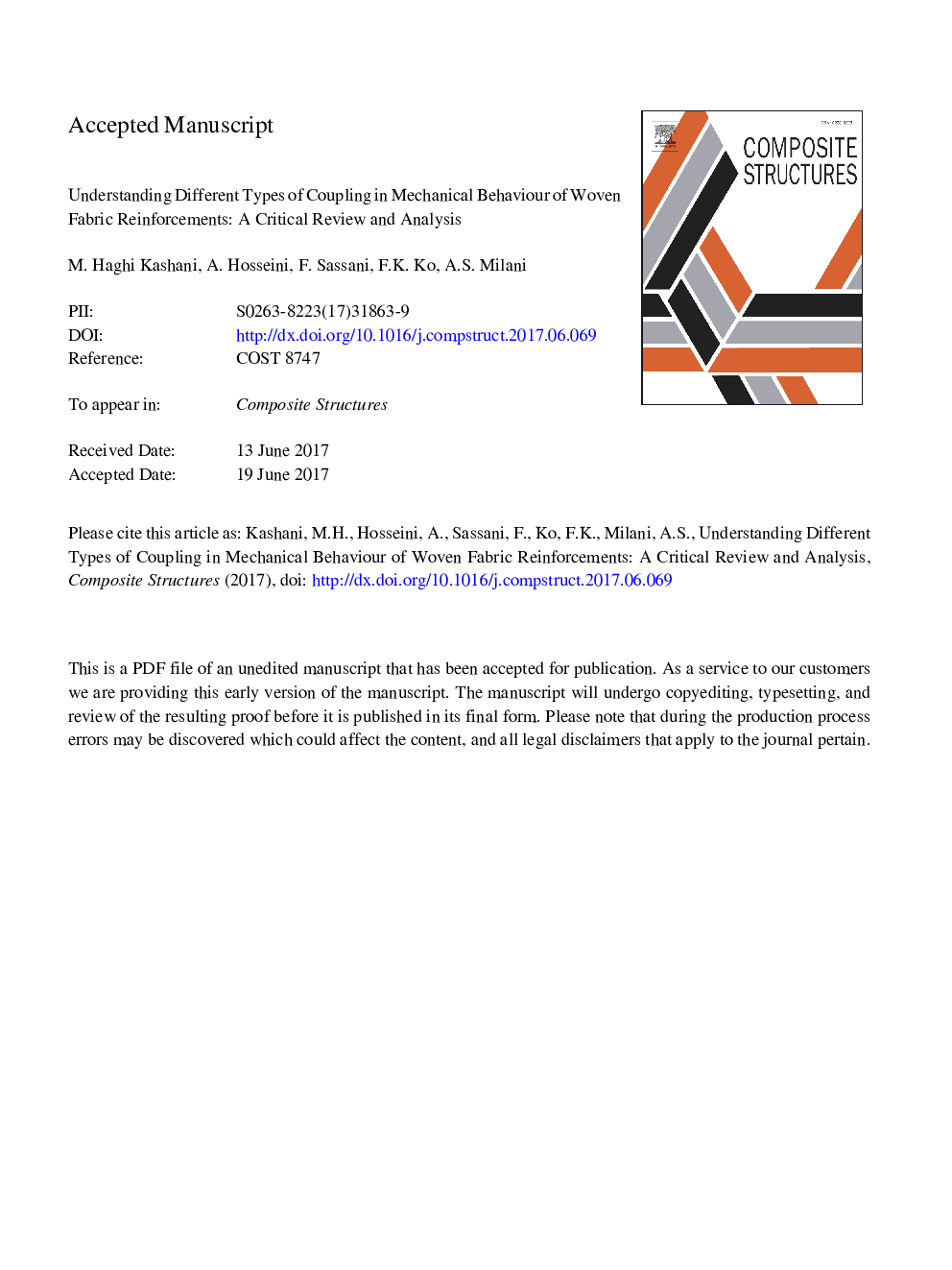| Article ID | Journal | Published Year | Pages | File Type |
|---|---|---|---|---|
| 4911883 | Composite Structures | 2017 | 28 Pages |
Abstract
This study attempts to provide an improved insight into the significant role of inherent coupling in the mechanical behavior of woven fabric composites. In particular, applying yarns tension to postpone the wrinkling defect has now become a common technique in industry during shear forming of fabric reinforcements. Yet, in-depth understanding of this coupling characteristics is rather limited. The article first distinguishes between the meso-level (inherent) coupling and the macro-level coupling expressed by the general Hook's law. Then, specific types of inherent couplings are identified, including tension-tension, tension-shear, and shear-tension. A fixture capable of performing combined loadings was employed to characterize the coupling modes in a typical glass/polypropylene plain weave. Results revealed a highly dominant influence of tension-shear coupling on the effective mechanical properties of the fabric, followed by the tension-tension and shear-tension couplings. Discussions are made as to how these macro-level observations may be linked to underlying deformation mechanisms at lower material scales.
Keywords
Related Topics
Physical Sciences and Engineering
Engineering
Civil and Structural Engineering
Authors
M. Haghi Kashani, A. Hosseini, F. Sassani, F.K. Ko, A.S. Milani,
